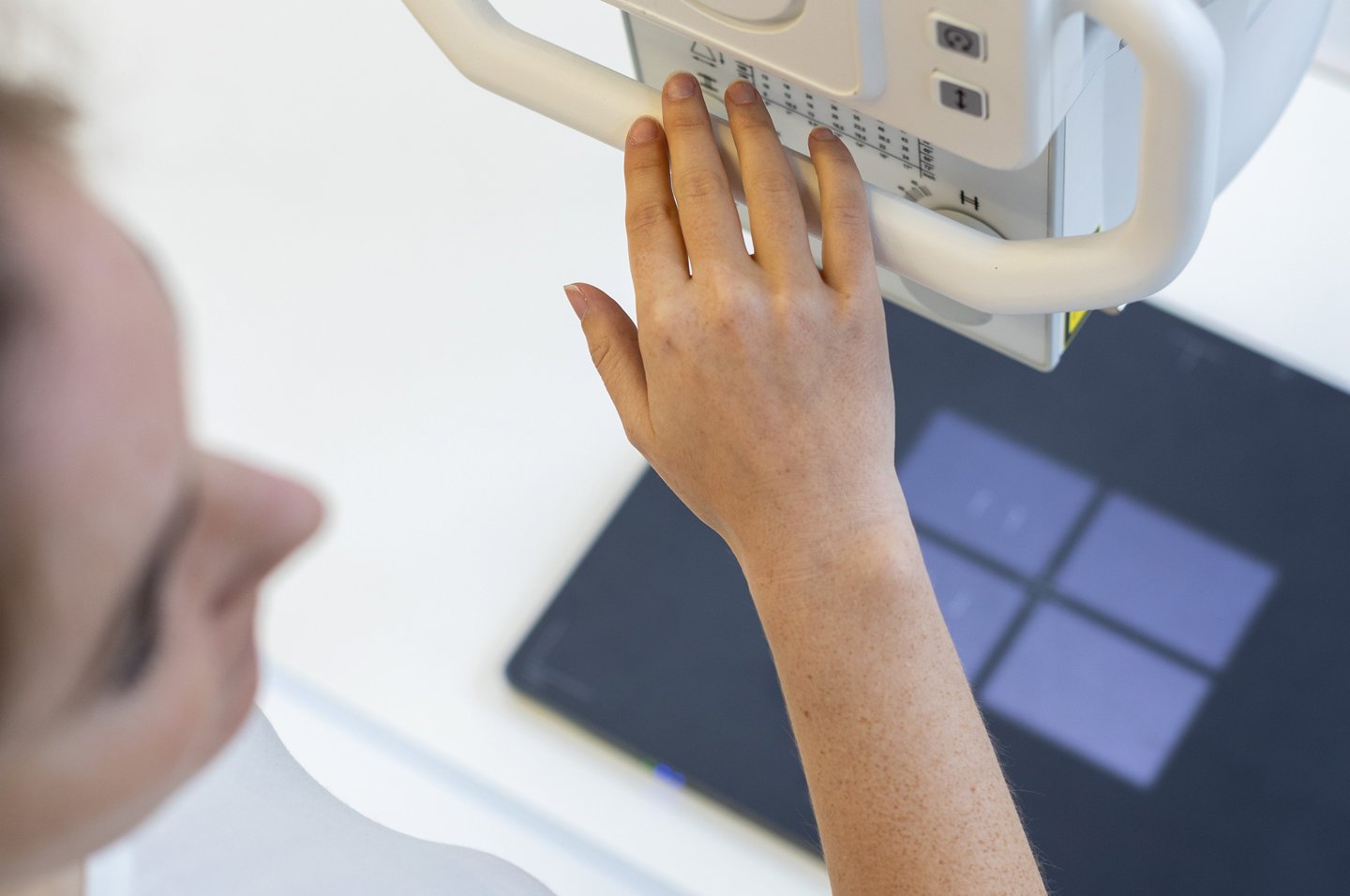Radiation protection during X-rays – what applies in the case of X-ray examinations today?
Sometimes patients have reservations about medical X-rays because they are concerned about health risks. However, this need not be the case since radiation protection during X-ray examinations is taken very seriously and is regulated by law. In any case, X-rays should only be taken if a targeted benefit justifies the examination. The principles of necessity and justification as indicated by the medical referral, as well as the principles of optimisation and dose limitation are applicable here.
A major advance in medically-safe X-ray imaging has been achieved through digital X-rays and the ongoing development of X-ray software such as the EXAMION X-AQS.
By combining the latest hardware technologies and constantly advancing X-ray software, correct X-ray parameters can be set automatically. This makes it possible to reduce the radiation dose to the minimum necessary (principle of dose limitation) and thus keep radiation exposure of the patient as low as possible during each acquisition (principle of optimisation).
Therefore, advanced X-ray equipment supports operators to carry out X-ray examinations according to their best judgment and thus also comply for example with the ALARA principle (“As Low As Reasonably Achievable”). In practice, operating errors can now largely be avoided with carefully-designed and integrated hardware and software system. This is in the interests of your own health as well as the health of your patients
In addition to the correctly parameterised X-ray software, there is also so-called passive radiation protection: This includes the use of X-ray protective clothing, such as aprons or lead mats, and insulation of the X-ray room. The required shielding capability of the X-ray room is regulated by the Radiation Protection Ordinance / the Radiation Protection Act (Strahlenschutzverordnung / Strahlenschutzgesetz, StrlSchV/StrlSchG) and the DIN 6812 standard. These regulations specify exactly how structural building radiation protection should be designed. A determining factor of the required lead equivalent value is, among other things, the voltage of the X-ray tube [kV] used and the operating load [maS/week].
When making your purchase decision, the calculation of the necessary structural radiation protection is included as part of our service concept, in other words, you receive professional expert advice, ensuring compliance with legal requirements.
Of course, we also offer accessories for the effective radiation protection of patients and staff. Please contact us for more information.
